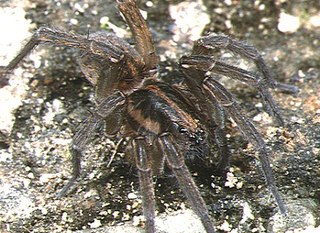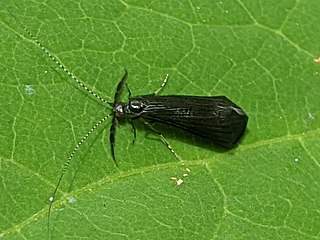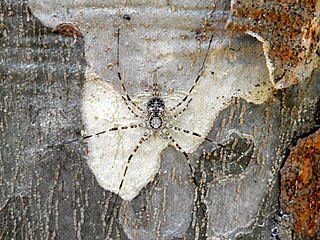
Wolf spiders are members of the family Lycosidae. They are robust and agile hunters with excellent eyesight. They live mostly in solitude, hunt alone, and usually do not spin webs. Some are opportunistic hunters, pouncing upon prey as they find it or chasing it over short distances; others wait for passing prey in or near the mouth of a burrow.

Huntsman spiders, members of the family Sparassidae, are known by this name because of their speed and mode of hunting. They are also called giant crab spiders because of their size and appearance. Larger species sometimes are referred to as wood spiders, because of their preference for woody places. In southern Africa the genus Palystes are known as rain spiders or lizard-eating spiders. Commonly, they are confused with baboon spiders from the Mygalomorphae infraorder, which are not closely related.

The Pholcidae are a family of araneomorph spiders. The family contains more than 1,800 individual species of pholcids, including those commonly known as cellar spider, daddy long-legs spider, carpenter spider, daddy long-legger, vibrating spider, gyrating spider, long daddy, and skull spider. The family, first described by Carl Ludwig Koch in 1850, is divided into 94 genera.

Velvet spiders are a small group of spiders almost entirely limited to the Old World, with exception of a few species known from Brazil. In Europe some are commonly called the ladybird spiders

Trochosa ruricola is a wolf spider whose common name is rustic wolf spider. The females are 15 mm (0.6 in) but can reach 25 mm (1.0 in), and the males are 10 mm (0.4 in). Both sexes are dark brown and have a pale band that runs down to the carapace and continues to the abdomen.
Trochosa hungarica is a wolf spider species in the genus Trochosa found in Hungary.

Trochosa robusta is a cellar spider species with Palearctic distribution. It is common in Germany and Poland. It remained unobserved, despite its considerable size, in Denmark until recently, where it was sighted on the island of Bornholm.

Trochosa terricola is known as the ground wolf spider, is a wolf spider which is common and widespread in western and central Europe. It has been recorded as prey for the pompilid wasp.

Trochosa aquatica is a species of wolf spider found in eastern Asia which was first described in 1985.
Trochosa spinipalpis is a specialised species of Palearctic, wolf spider which is restricted to bogs and other wetlands.
Paracyphononyx is a genus of spider wasps distributed in the tropics and warmer temperate regions; they differ from other pompilids in that they do not permanently disable the host spider but allow the spider to resume activity after the wasp has laid its egg on the spider while the wasp larva exists as koinobiont ectoparasitoid of the spider.

Alireza Zamani is an Iranian arachnologist and taxonomist.
Trochosa abdita is a spider in the family Lycosidae, in the infraorder Araneomorphae . It is found in the USA.

Mystacides is a genus of long-horned caddisflies in the family Leptoceridae. There are more than 20 described species in Mystacides.

Mystacides sepulchralis, the black dancer, is a species of long-horned caddisfly in the family Leptoceridae. It is found in North America.

Proisotoma is a genus of elongate-bodied springtails in the family Isotomidae. There are at least 50 described species in Proisotoma.

Neotama mexicana, also known as the long-spinneret spider or Mexican two-tailed spider, is a species of tree trunk spider in the family Hersiliidae. It is found in a range from the United States to Peru and Guyana.

Dryudella is a genus of wasps in the family Crabronidae. There are more than 50 described species in Dryudella.

Pseudothyris sepulchralis, the mournful thyris, is a species of day-flying moth in the family Thyrididae and can be found throughout North America. They have a flight duration of 2–3 weeks. The adults are rarely found on flowering plants for feeding.















